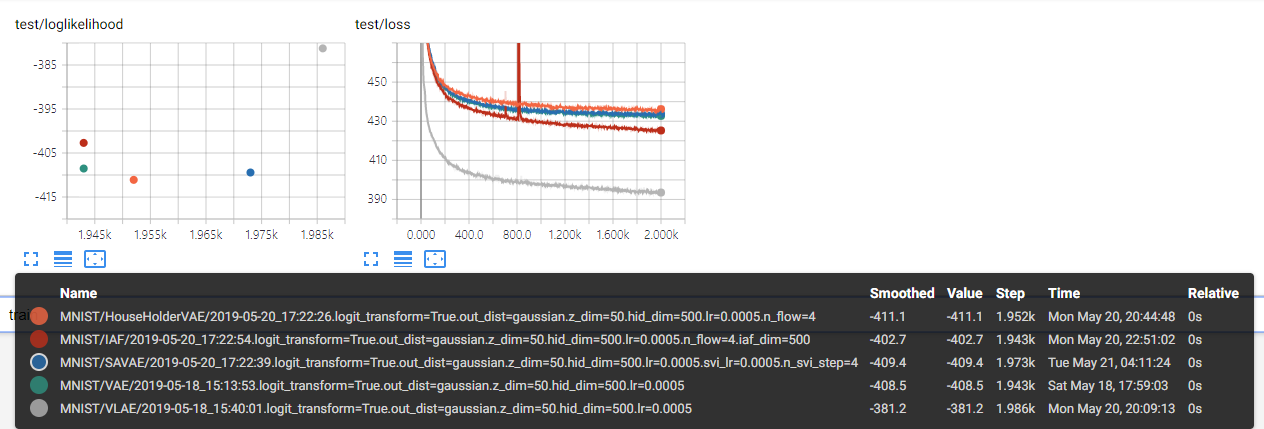Pytorch implementation for our paper Variational Laplace Autoencoders in ICML 2019.
This code assumes GPU computation.
- Pytorch 1.0
- Tensorflow 1.13 (for tensorboard utility)
Install additional required packages
pip install -r requirements.txt
Make directories for datasets and model checkpoints
mkdir checkpoints
mkdir datasets
To run an experiment
python run.py --dataset=MNIST --output_dist=gaussian --model=VLAE --n_epochs=2000 --hidden_dim=500 --z_dim=50 --n_update=4
run.py will automatically download the dataset at the first run and train the model for n_epochs. After the training is finished, it will evaluate the log-likelihood using the best checkpoint using importance sampling (5000 samples by default).
This repo also includes our implementations of the VAE, SA-VAE, HF, IAF models which we used as baselines for our experiments.
Type python run.py --help to see help messages on the arguments.
On the other hand, you can manually evaluate a checkpoint (note that you will have to use the same model setting arguments to correctly load the model)
python eval.py --dataset=MNIST --output_dist=gaussian --model=VLAE --hidden_dim=500 z_dim=50 --n_update=4 --checkpoint=<path_to_your_checkpoint>
Basic Tensorboard logging functionality is implemented. It includes loss curves and image sample visualizations. The tensorboard event file is saved at the checkpoint directory of the model. To launch a tensorboard, run:
tensorboard --logdir=<path_to_your_checkpoint_directory>
- Due to major code refactoring and clean-up, the log-likelihood results may not be exactly the same as those reported in the paper.
- Rather than directly scaling the data, which will change the scale of the log-likelihood results, we instead initialize the output variance according to the data variance so that the reconstruction error
torch.sum((x - mu)**2) / variancewill be initially about d (not 1.0) where d is the image size (e.g. 28x28 = 784 for MNIST). The appendix of the paper was incorrectly stated regarding this. - Some papers preprocess data by adding uniform noise to pixel values, then apply a logit transformation on the data in order to prevent the likelihood from exploding and reduce boundary effects. Though we did not use this in the paper, we have implemented it which can be used by adding an argument
logit_transform=True. We observe similar experimental results (though their scale is different) to those in the paper.
Example run results using dataset=MNIST output_dist=gaussian n_update=4 logit_transform=True on the MNIST dataset.

@inproceedings{park2019,
title={Variational Laplace Autoencoders},
author={Park, Yookoon and Kim, Chris Dongjoo and Kim, Gunhee},
booktitle={ICML},
year={2019}
}